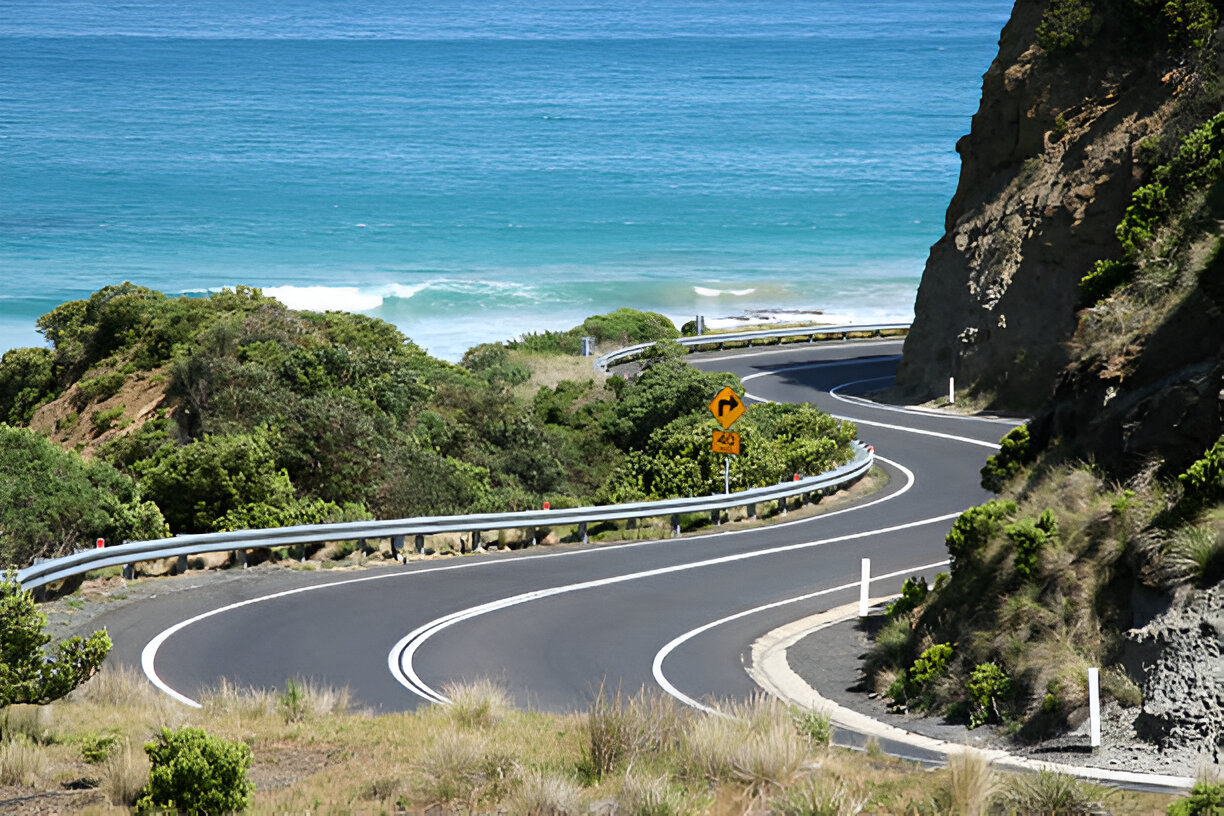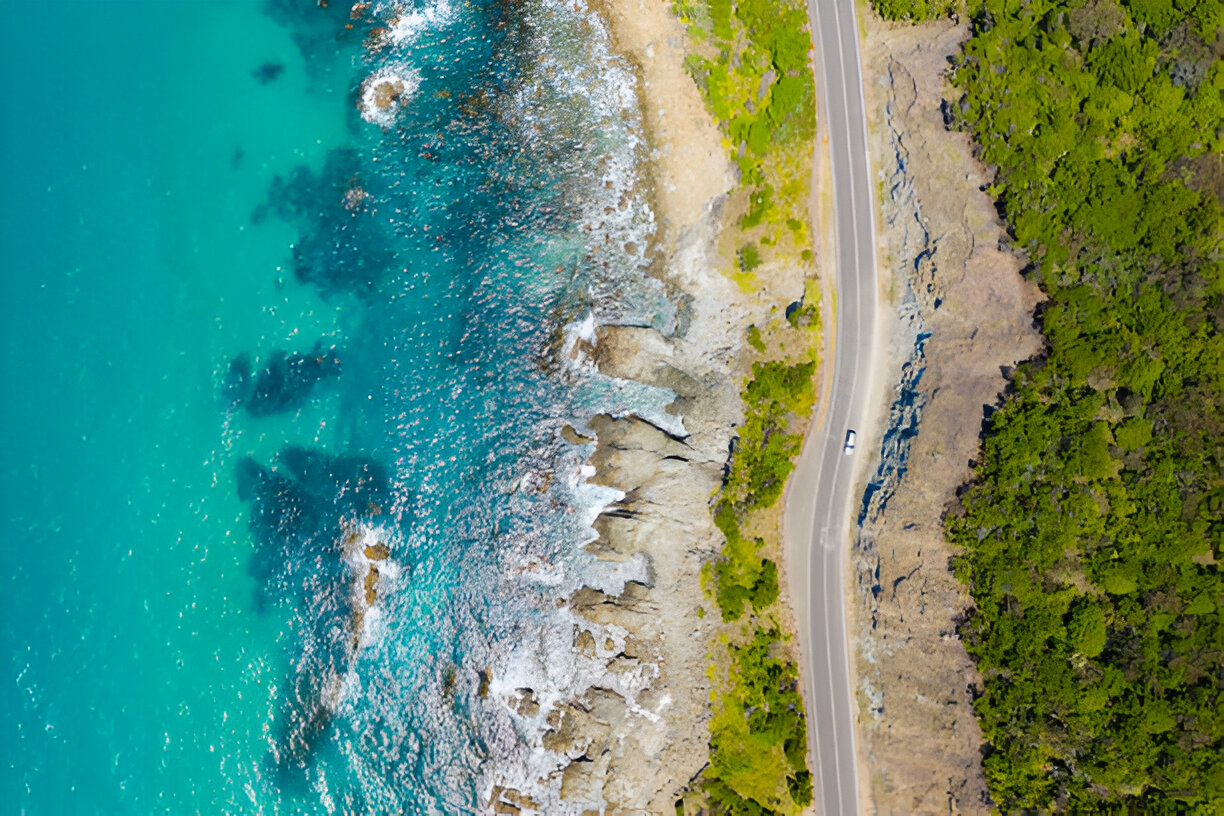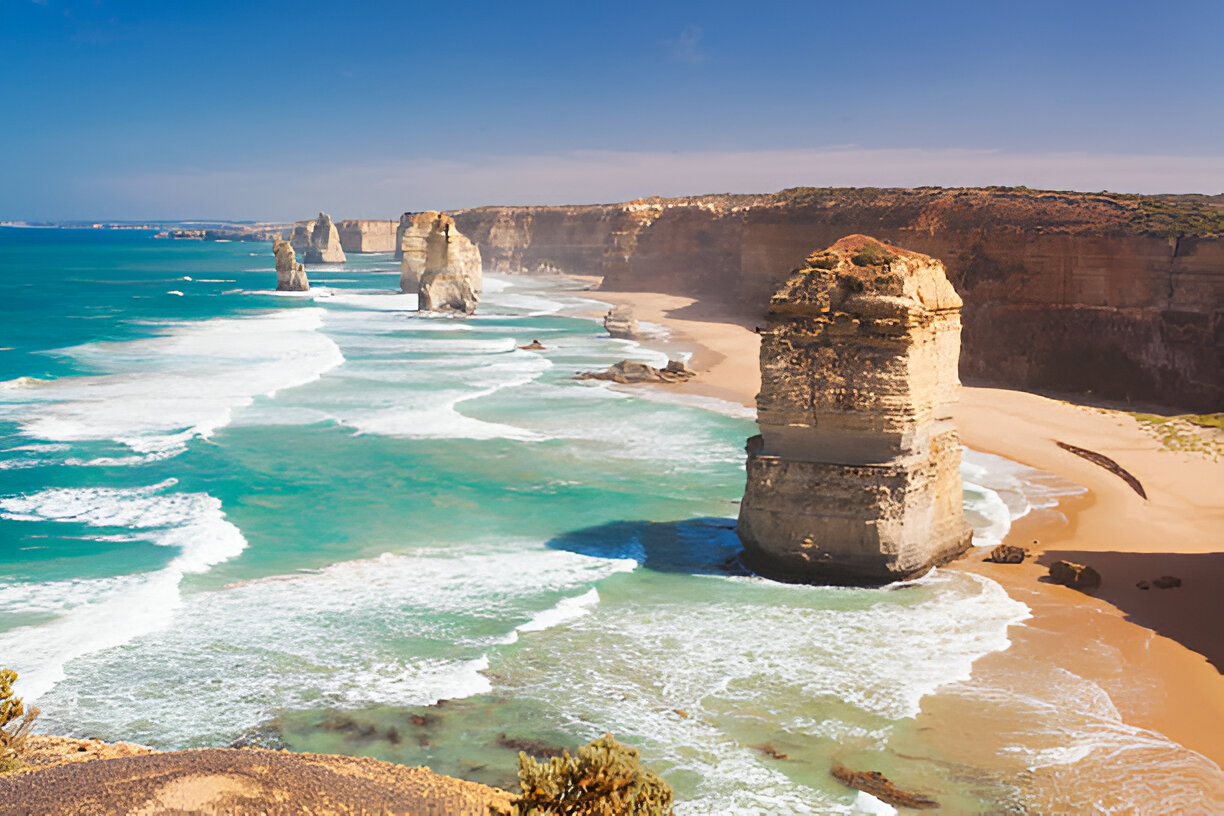Great Ocean Road: The stunning coastline you can’t miss in 2025
- Published on
The Great Ocean Road, one of Australia's most famous driving routes, is located along the southern coastline of Victoria. Known for its spectacular coastal scenery, rich natural landscapes and unique cultural history, it is one of the must-see attractions for every traveler when they come to Australia. Below is a detailed introduction of the Great Ocean Road to help you plan an unforgettable trip.

Introduction to the Great Ocean Road
- Historical Background The construction of the Great Ocean Road began in 1919 to provide employment opportunities for World War I veterans and as a war memorial to honor fallen soldiers. Today, the road has become one of the most beautiful coastal highways in the world, attracting thousands of tourists.
- Breathtaking Natural Landscape The natural landscapes along the route are breathtaking, including cliffs, beaches, forests and oceans. Visitors can enjoy natural wonders such as the spectacular Twelve Apostles rock and Loch Ard Gorge.
- Abundant wildlife The route along the Great Ocean Road is home to a wide variety of wildlife and visitors have the opportunity to see koalas, kangaroos, seals and a wide range of birds. Wildlife watching experiences are particularly rich in the Great Ocean Road's Apollo Bay and Great Otway National Park.
- Culture and history In addition to its natural beauty, the Great Ocean Road is rich in cultural and historical sites. Towns along the route such as Lorne, Apollo Bay and Port Fairy have retained many historic buildings and cultural activities, allowing visitors to delve into local history and culture.
Travel Preparation
- Best time to travel The best time to travel the Great Ocean Road is during the spring (September to November) and fall (March to May), when the weather is mild enough for driving. Summer (December to February) is warmer but more touristy, while winter (June to August) may experience more rainfall.
- Mode of transportation Self-drive is the best way to explore the Great Ocean Road, allowing visitors to stop at various points of interest at their own pace. Victoria's public transportation system also provides bus services to the Great Ocean Road, but self-drive tours are more flexible.
- Accommodation recommendations There are a variety of accommodation options along the route, ranging from luxury hotels to budget hostels. Apollo Bay and Porterfield are popular places to stay, and travelers can choose hotels close to the beach to enjoy beautiful ocean views.
- Packing Preparation Prepare appropriate clothing according to the season. In summer, you can choose lightweight clothing, while in winter, you need to bring warm clothing. It is also recommended to carry sunscreen, camera and water bottle for use during the tour.
Trip highlights
- The Twelve Apostles Rock One of the most famous landmarks on the Great Ocean Road, the Twelve Apostles Rock is a spectacular limestone column formed by the erosion of the waves. Visitors can enjoy these natural wonders from the lookout point, and the view is especially stunning at sunrise and sunset.
- Lockard Canyon Lockard Canyon is a legendary place, named after a shipwreck. There are beautiful beaches and spectacular cliffs where visitors can go hiking and explore the surrounding nature.
- Great Ocean Road National Park This national park protects the natural ecology along the Great Ocean Road, where visitors can go hiking, biking and wildlife watching. There are several hiking trails in the park for visitors of all levels.
- **Apollo Bay Apollo Bay is a charming seaside town with beautiful sandy beaches and an abundance of seafood restaurants. Visitors can relax and enjoy beach activities such as swimming, surfing and fishing.
- Porterfield Porterfield is a historic town known for its old buildings and charming harbor. There are many art galleries and craft stores where visitors can buy souvenirs of local specialties.

Mode of transportation
- Self-drive tour A self-drive tour is the best option for exploring the Great Ocean Road. Visitors can start from Melbourne and drive along the Great Ocean Road, stopping at various attractions on the way. The road is in good condition and there are several viewpoints and rest areas along the way.
- Public Transportation If driving is not convenient, tourists can choose to take buses to the Great Ocean Road. Several tour companies offer day and multi-day tours from Melbourne, making it easy for visitors to see the major attractions.
- Taxis and shared trips Cabs and shared mobility services are available in certain areas of the Great Ocean Road, but are relatively expensive and suitable for short trips.
Suggested itinerary
- Departure from Melbourne Traveling along the Great Ocean Road from Melbourne, your first stop could be Lorne to enjoy the beaches and small town charm.
- Apollo Bay Next head to Apollo Bay for fresh seafood and beach activities. You can choose to stay overnight to fully experience the town's charm.
- The Twelve Apostles Rock Head to the Twelve Apostles Rock the next day for spectacular coastal views. It is recommended to arrive at sunrise or sunset for beautiful photos.
- Rockyard Canyon Continue to Rockyard Canyon to explore this legendary place, take a hike and enjoy the tranquility of nature.
- Porterfield Finally, head to Porterfield to explore this historic town and experience the local culture and cuisine.
Cultural Background
- Oceanic Culture The construction and development of the Great Ocean Road is closely linked to maritime culture, with the economy of many towns dependent on fishing and tourism. Visitors can experience a strong maritime culture here.
- Aboriginal Culture The Great Ocean Road region is one of the major birthplaces of Australia's Aboriginal culture. Visitors can learn about the history and traditions of the Aboriginal people by visiting local cultural centers and art exhibitions.
- Arts and Crafts The towns along the route are home to many art galleries and craft stores showcasing the work of local artists. Visitors can purchase unique souvenirs and support local artists.

Travel Safety Advice and Handling Emergency Situations
Ensuring safety is an important task for every traveler when visiting the Great Ocean Road. Here are some travel safety tips and guidelines for handling emergency situations to help you stay safe and secure.
Travel safety advice
- Stay alert When traveling on the highway, pay attention to traffic rules and stay alert, especially on narrow roads and curves. Make sure your vehicle is in good condition and check your tires and brakes regularly.
- Be aware of weather changes The weather on the Great Ocean Road changes quickly, so check the weather forecast before you leave and avoid traveling in bad weather. Try to choose a safe place to park in case of heavy rain or strong winds.
- Keep hydrated and eat well When driving long distances, make sure you take regular breaks to stay hydrated and avoid fatigue. You can prepare some small snacks to replenish energy on the way.
Emergency Situation Handling
- Medical Emergencies If you have a medical emergency during your tour, call Australia's emergency contact number “000”. Many towns along the way have medical facilities that can provide the necessary assistance.
- Lost and Found If you lose a personal item, report it immediately to the local police and contact the relevant lost and found office. Many towns also offer lost and found services at their visitor centers.
- Encountering crime If you encounter a theft or other crime, remain calm, try to memorize the perpetrator's identity, and call the police at “000”. Ensuring your safety is your first priority.
- Response to natural disasters In the event of a natural disaster, follow the instructions of local authorities and emergency services to find a safe haven. There are many signs along the Great Ocean Road directing visitors to safe areas.
Australia travel esim
Before you embark on your trip to Australia, be sure to purchase an eSIM package from PhoneSIMGo. This travel eSIM provides travelers with high-speed internet to help you surf the web with ease and avoid roaming charges. Whether you're looking for attractions or sharing your travel experiences, PhoneSIMGo provides you with reliable internet support.
Frequently Asked Questions about Australia's Great Ocean Road Excursions
- When is the best time to visit the Great Ocean Road?
- The best time to visit the Great Ocean Road is in spring (September to November) and fall (March to May), when the weather is pleasant and the scenery is most charming.
- How to reach the Great Ocean Road?
- The Great Ocean Road is accessible from Melbourne, usually by driving, joining a tour group or taking public transportation.
- What are the main attractions of the Great Ocean Road?
- The main attractions include the Twelve Apostles Rock, Rocky Ade Gorge, Apollo Bay and various beaches and towns along the Great Ocean Road.
- How long does it take to travel the Great Ocean Road by car?
- A complete walk of the Great Ocean Road usually takes 2 to 3 days, depending on the stops and activities.
- What are the accommodation options along the route?
- There are a variety of accommodation options along the route, including hotels, hostels, B&Bs and camping areas for travelers of all budgets.
- Is the Great Ocean Road suitable for families?
- Yes, the Great Ocean Road is suitable for family travel with many activities and attractions for children such as beaches and nature reserves.
- Are there any outdoor activities on the Great Ocean Road?
- Yes, visitors can do hiking, surfing, whale watching, cycling and many other outdoor activities.
- What is the weather like on the Great Ocean Road?
- The weather on the Great Ocean Road is very changeable. Visitors are advised to prepare clothing suitable for different climates and check the weather forecast.
- Do I need to book attraction tickets in advance?
- Most of the natural attractions are free of charge, but some specific activities or scenic spots may require advance booking of tickets.
- Are there dining options on the Great Ocean Road?
- There are several restaurants and cafes along the route offering local cuisine and seafood, so visitors can enjoy a rich dining experience.

